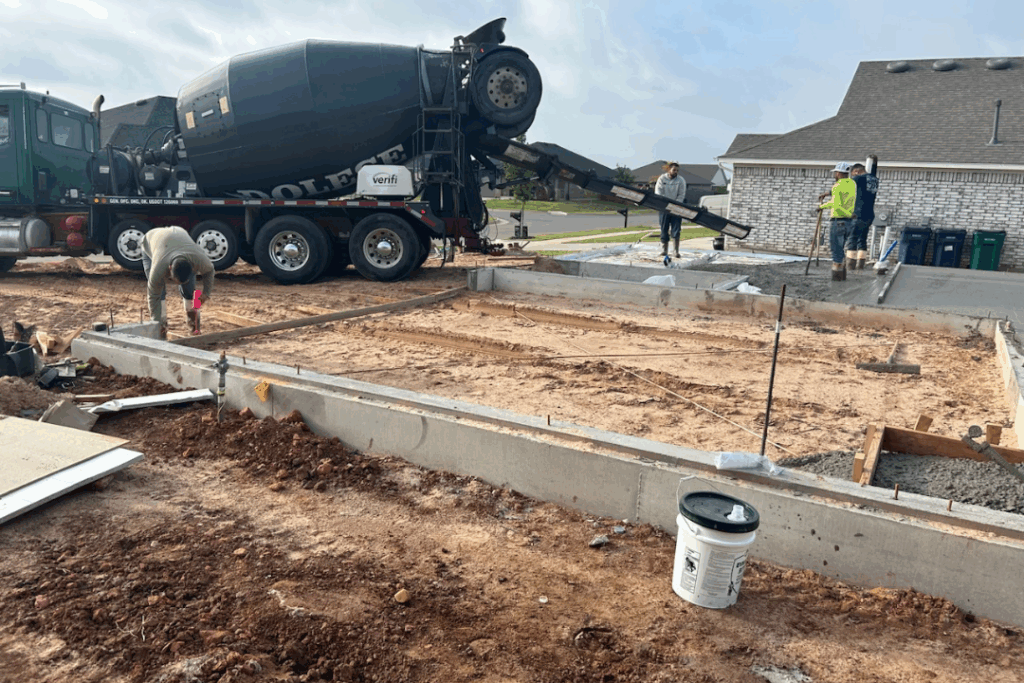
The Role of Rebar and Reinforcement in Concrete Strength
At Innovative Concrete Solutions, we know that concrete’s strength doesn’t just come from what’s poured—it comes from what’s inside. Reinforcement materials like rebar, mesh, and fibers play a vital role in turning ordinary concrete into a structure built to last. Understanding the key concrete reinforcement benefits helps property owners, contractors, and engineers make informed choices about building for durability, safety, and sustainability.
Why Concrete Needs Reinforcement
Concrete is an incredible building material—it’s versatile, cost-effective, and naturally strong under compression. But it has one major limitation: tension. When subjected to bending, pulling, or uneven stress, plain concrete can crack or fail. That’s why nearly every structural slab, wall, and foundation relies on reinforcement.
Adding steel or synthetic reinforcement balances concrete’s weaknesses by giving it tensile strength. Together, these materials create what’s known as reinforced concrete—a system that resists compression, tension, and shear forces simultaneously. This combination delivers the reliability modern structures demand.
(Learn more about how concrete behaves under stress at energy.gov and concrete.org.)
The Materials Behind Reinforced Concrete
At Innovative Concrete Solutions, we use several reinforcement methods depending on the size, scope, and environmental demands of each project. Our team evaluates soil conditions, load requirements, and design specifications to determine the right combination of strength and flexibility.
Rebar (Reinforcing Steel)
Rebar remains the gold standard in structural reinforcement. Embedded in the slab or column, it absorbs tensile forces and redistributes stress across the concrete. When properly placed and tied, rebar prevents cracking and ensures the structure holds its form under heavy load.
Welded Wire Mesh
Ideal for thinner slabs and flatwork, welded wire mesh provides surface-level reinforcement that minimizes shrinkage cracks. It’s particularly effective for sidewalks, driveways, and commercial floor slabs where even stress distribution is essential.
Post-Tension Cables
In high-performance applications—such as parking decks, industrial floors, or long-span structures—post-tension cables deliver powerful internal compression once tensioned. This method reduces cracking and allows for thinner, lighter slabs without compromising strength.
Fiber Reinforcement
Fibers, whether steel, glass, or synthetic, are mixed directly into the concrete. They improve crack resistance, abrasion tolerance, and impact strength. Fiber reinforcement is also an excellent option for sustainable projects, reducing the need for excess steel while maintaining performance.
(Explore our Commercial Concrete Services to see how we tailor reinforcement systems for each build.)
The Key Concrete Reinforcement Benefits
1. Superior Load-Bearing Capacity
The most obvious advantage of reinforced concrete is its ability to carry more weight. By adding tensile strength, reinforcement enables slabs, beams, and columns to handle constant or dynamic loads—like vehicles, heavy machinery, and multi-story structures—without deforming. This is one of the primary concrete reinforcement benefits that allows designers to create stronger and more efficient buildings.
2. Enhanced Crack Control
Concrete naturally shrinks and expands with temperature and moisture changes. Reinforcement helps control where cracks form and prevents them from spreading, maintaining both structural integrity and appearance. With proper design and placement, small cracks stay non-structural and manageable for decades.
3. Greater Durability and Longevity
Another major advantage among concrete reinforcement benefits is longevity. Reinforced concrete is less prone to shifting, settling, or fatigue over time. By resisting environmental and mechanical stress, it extends a structure’s lifespan—reducing the need for maintenance, repair, and material waste.
4. Resilience Against Environmental Forces
From freeze-thaw cycles to soil movement, concrete endures constant environmental pressure. Reinforcement gives it the internal stability to flex without breaking, ensuring performance under variable conditions. For climates like Oklahoma’s—with heat, rain, and shifting ground—this resilience is critical.
5. Design Flexibility
Reinforcement expands what’s possible in design. Architects and engineers can create larger spans, thinner slabs, and complex geometries—like curved facades or cantilevered decks—without compromising safety. That creative freedom is one of the most valuable concrete reinforcement benefits for modern construction.
What Happens Without Reinforcement
Skipping reinforcement might seem like a shortcut, but it often leads to costly consequences. Unreinforced slabs are more likely to crack, settle unevenly, or deteriorate prematurely. We’ve seen cases where unreinforced patios and warehouse floors failed within a few years—causing safety concerns and expensive replacements.
Without reinforcement, structures face:
- Cracking and separation from uneven loads or shrinkage
- Moisture infiltration through unsealed gaps
- Reduced structural capacity under stress
- Shortened lifespan and higher maintenance costs
Simply put, the absence of reinforcement compromises both performance and sustainability.
How Innovative Concrete Solutions Reinforces Right
At Innovative Concrete Solutions, we take a science-based approach to reinforcement. Every project starts with a full structural assessment—analyzing load paths, soil composition, and environmental exposure. From there, our engineers and field crews design and install reinforcement that meets both strength and sustainability goals.
We follow American Concrete Institute (ACI) best practices, using high-quality materials and precision placement to ensure every pour performs under pressure. Our mix designs, reinforcement layouts, and curing processes all work together to prevent cracking and deliver long-term reliability.
Our Sustainability Commitment
We believe that stronger concrete is also greener concrete. By building reinforced structures that last longer, we help reduce waste, conserve resources, and minimize the carbon impact of reconstruction. Many of our clients choose reinforcement solutions that support LEED certification and environmentally conscious design.
(Learn about sustainable construction standards at usgbc.org.)
Building Strength That Lasts
Reinforcement might be hidden beneath the surface, but it’s what gives concrete its real power. Every bridge, foundation, or commercial slab we pour is designed with precision reinforcement to ensure decades of safe, stable performance.
Understanding concrete reinforcement benefits isn’t just about the materials—it’s about building smarter. At Innovative Concrete Solutions, we combine engineering expertise with sustainable practices to help clients create structures that perform beautifully today and stay strong for generations.
Ready to build on a stronger foundation?
Contact Innovative Concrete Solutions today to learn how our expert team designs and installs reinforced concrete systems that maximize performance, longevity, and sustainability.
